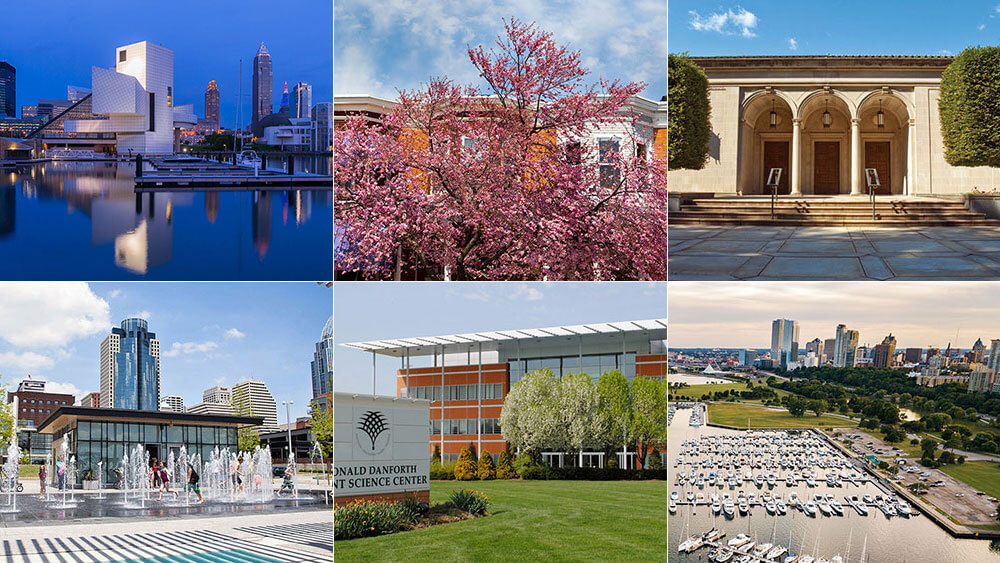
Former Rust Belt cities Cleveland (clockwise from upper left), Baltimore, Pittsburgh, Milwaukee, St. Louis, and Cincinnati have reinvented their economies.
Love it or hate it, the phrase “content is king,” penned by Bill Gates in a 1996 essay, has become part of our vernacular. And when it comes to meetings, destinations are no exception. A destination’s knowledge economy can now rank just as highly in importance for certain groups as its supply of event space and hotel rooms.
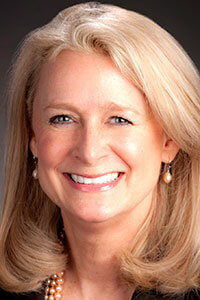
Kitty Ratcliffe
What destinations can offer as content — speakers, collaborations, experiences — often stems from the mainstays of a city’s innovation infrastructure, including its startups, universities, industry clusters, and research institutions.
“The content that is provided that provides real-time, hands-on experience,” said Kathleen (Kitty) Ratcliffe, president of Explore St. Louis, and “access to speakers who are delivering content that they can’t get any other way — that kind of innovation will sustain a meeting.”
That means that for destinations with industrial roots that have evolved into thriving new innovation-based economies, showcasing their revamped identities not only helps to correct outdated perceptions but also brings groups more deeply into their city’s folds. Facilitating this more meaningful connection can be key for DMOs trying to draw the right groups, especially associations.
“Many different types of associations are coming to grips with the purpose of their conventions and meetings, and what it is that they need to be doing to cause people to care about coming,” Ratcliffe said. “If they aren’t starting to look at this, and refocusing how to deliver a message about that purpose and how they can actually deliver on it, they may be left behind as people change their behaviors about attending big meetings.”
Here’s how six U.S. cities formerly in the Rust Belt are helping planners see them in a new light.
ST. LOUIS
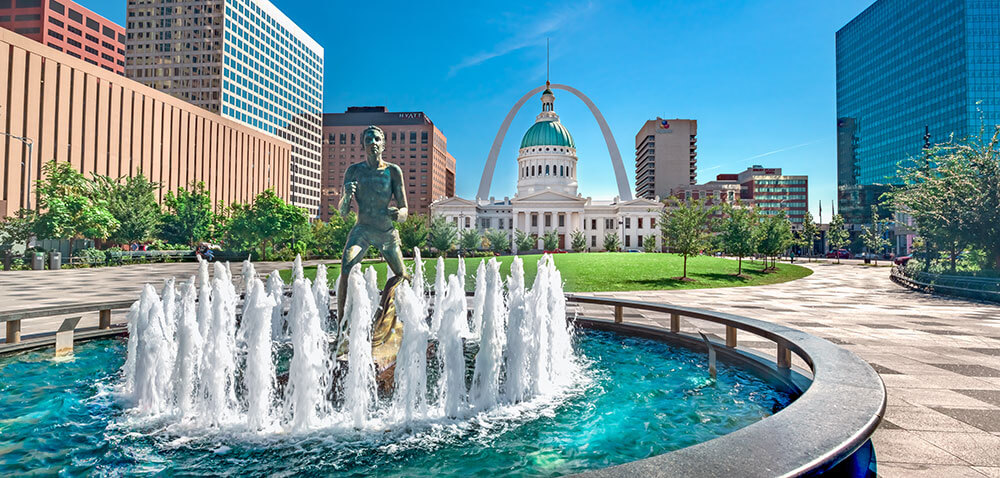
Kiener Plaza Park and “The Olympic Runner” statue honor Harry J. Kiener, an athlete on the U.S. track team at the 1904 St. Louis Olympics during the World’s Fair.
Just one block from America’s Center Convention Complex, the T-REX technology incubator and co-working space houses more than 200 companies. “It’s a young, vibrant crowd,” Ratcliffe said about her city’s startup scene. “Having a facility like [T-REX] outside our convention center’s doors has really helped in terms of development, overall, of that tourism infrastructure. They want to tell that story,” Ratcliffe added, to help attract more businesses to the incubator, which offers event space and tours to groups. They also hold an annual startup competition, which draws applicants from all over the world. “There’s a lot of synergy to all of it.”
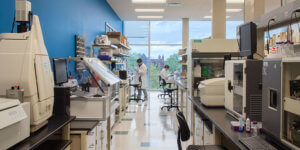
A CORTEX lab (shown), Anheuser-Busch, and America’s Center help tell St. Louis’ story today.
The city is also home to CORTEX, a 240-acre bioscience complex two miles away from America’s Center. Biosciences, Ratcliffe says, is an industry that has really blossomed in St. Louis during the last 10 to 15 years — and it grew out of the city’s Rust Belt era, when it had a thriving manufacturing base rooted in technology and the sciences. Take, for instance, Nestlé Purina and Anheuser-Busch, both born in St. Louis — they’re very much dependent on food and plant sciences, “as they develop and refine the product they have to offer,” she said. They also reap the benefits of having the world’s largest independent nonprofit plant science research institute, the Donald Danforth Plant Science Center, just a few miles away.
St. Louis also counts the Washington University School of Medicine and the National Geospatial-Intelligence Agency (NGA) among its prominent institutions, the former being home to the McDonnell Genome Institute (MGI), which played a large role in sequencing the human genome.
“You have a lot of scientists here who do different kinds of work,” Ratcliffe said. “All of that is coming together as they have realized that they can help one another. The conversations that they’re having help to attract world-class talent to St. Louis, and that’s really changing the face of our community.”
Ratcliffe said that these assets “help us craft a message that first counteracts the impression that people may have” of St. Louis as a Rust Belt city. “That helps us change that narrative,” she said, to one about the city “as a place of innovation and creativity.” It has also helped to attract niche programs like the Entrepreneurs’ Organization’s 2018 XCentric event and the Association for Computing Machinery, meeting in St. Louis in 2021 and again in 2025.
BALTIMORE
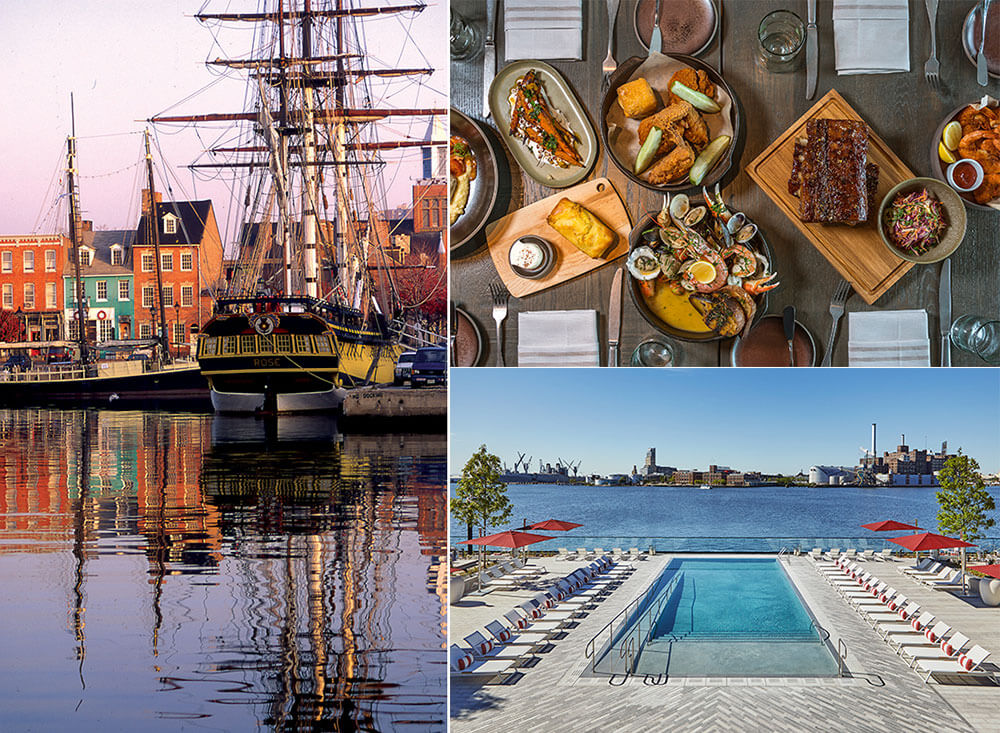
In Fell’s Point, a bustling settlement incorporated in 1773, you can find 18th-century homes (left), a slew of fresh options for drinks and meals, and the new Sagamore Pendry Baltimore hotel, whose pool (bottom right) overlooks the Inner Harbor.
In recent years, Baltimore’s tech scene has increasingly garnered more and more headlines — a 2016 index from Cushman & Wakefield included the city on its list of 25 leading high-tech metro areas in the U.S, ranking No. 12. “The largest area of innovation growing in Baltimore right now is undoubtedly cybertech,” said Al Hutchinson, president and CEO, Visit Baltimore.
The $5.5-billion Port Covington project in South Baltimore, spear- headed by Under Armour founder Kevin Plank, has already landed three major cybersecurity firms (DataTribe, AllegisCyber, and Evergreen Advisors). The 235-acre waterfront development, which already includes the Sagamore Spirit Distillery and James Beard Award–winning chef Andrew Carmellini’s Rye Street Tavern, will also have office, hotel, and living space. The centerpiece will be the Rye Street Market, a food hall and market with multiple levels of restaurants, shops, and event space. This project, which will total about three million square feet, is what Mike Janke, co-founder of DataTribe, called “the creation of Cyber Town, USA” in a press release.
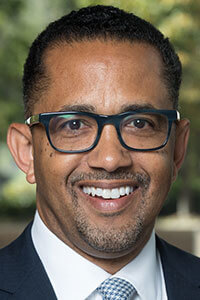
Al Hutchinson
So how is this massive development, which ranks as one of the largest urban renewal efforts in the U.S., affecting group business?
“We are seeing a rising interest from technology-related groups, both corporate and association, that see the strong value proposition in having their business events located in the heart of a thriving hub and ecosystem of resources and knowledge,” Hutchinson said. “We are also noting that customers from a variety of industries are interested in tapping into an innovation story to create a unique and memorable event experience. Creativity and innovation are interrelated and complementary.”
Baltimore has more than tech — its health-care community has long thrived. Johns Hopkins University and Johns Hopkins Health System rank as the region’s top two private- sector employers, and the University of Maryland Health System and MedStar Health rank third and fourth.
To boot, Baltimore also has a world-class medical research and bioscience industry. Often, all of these areas intersect. “Baltimore’s incredible startup culture coupled with the surrounding cast of medical schools and hospitals means that Baltimore is innovating with devices, drugs, and inventive technology,” Hutchinson said. “Johns Hopkins Technology Ventures is also supporting Baltimore inventors and entrepreneurs in fields such as therapeutics, medical devices, computing, and physical sciences.”
Proving the Need for Convention Center Expansion
This kind of collaboration has brought a boost to the city’s hospitality infrastructure. Under Armour’s Plank is behind the new Sagamore Pendry Baltimore, which opened in early 2017 in the Fell’s Point neighborhood. Part of Montage International’s Pendry brand of hotels, the 128-room property is one of several luxury boutique hotels to open in recent years, including The Ivy Hotel and Hotel Revival in Mount Vernon.
“These hotels show an investment in the city and confidence that our innovation areas will continue to grow,” Hutchinson said. “Furthermore, the openings demonstrate a commitment to extending tourism beyond the Inner Harbor.”
Baltimore By the Numbers
- More than 189,000 health-care professionals in the region, the nation’s third-highest concentration
- 138,000 total tech industry jobs in Maryland
- 59 two- and four-year colleges and universities across Maryland
Source: Visit Baltimore
CLEVELAND
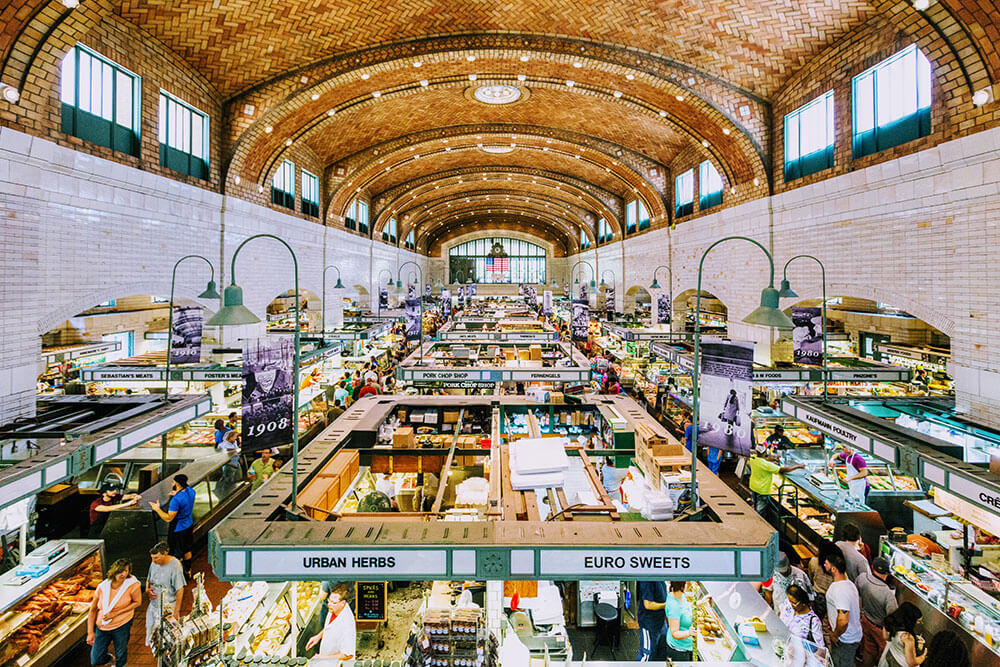
The West Side Market, which opened in 1912, is the oldest operating indoor/outdoor market space in Cleveland, and is listed on the National Register of Historic Places.
Like other former Rust Belt sister cities, Cleveland’s blue-collar roots are what eventually led to the city’s expansion into a diverse range of industries. Entrepreneurs like John D. Rockefeller paved the way for a new economy deeply rooted in health care, technology, and advanced manufacturing. “Clearly, we’ve diversified since our heyday in manufacturing,” said Ron Newman, director of sales for Destination Cleveland. Today, the city is home to household names like Cleveland Clinic, Progressive Insurance, and Sherwin Williams.
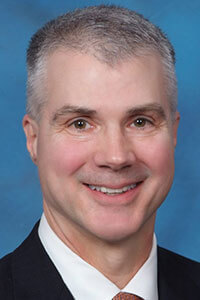
Ron Newman
Its health-care industry, especially, is booming. The city has 700 biomedical companies, 60 health-care systems, and 145,000 total employees within the health-care industry. The six-year-old Huntington Convention Center of Cleveland directly connects to the SMG-managed Global Center for Health Innovation, where close to 50 health-focused companies like GE Healthcare and Siemens have set up shop.
“We’re really a medical capital,” Newman said. Cleveland’s calendar is filled with medical conferences — International Association of Forensic Nurses Association (May 2019), American Society of Colon and Rectal Surgeons (June 2019), Professional Nurse Educators Group 46th Annual National Conference (October 2019), and the Cleveland Clinic 2019 Medical Innovation Summit (October 2019).
He added that, for them, the Rust Belt moniker isn’t really an issue — instead the CVB focuses on educating meeting professionals about Cleveland as a convention destination. “Because we’re a new convention city,” he said, “it’s more of a lack of knowledge of what the assets are, that more deters people from coming here. Just to cement that, our No. 1 objective is to host site inspections and fam trips. The majority of people, when they come here and experience it, [say] ‘Who knew?’ or ‘I had no idea.’”
Having planners on the ground goes a long way in showing them just how prolific, for example, their medical community is and how it can serve their group. “All these doctors and all these medical organizations that are here and available to use as speakers during events — that’s where the real rubber hits the road,” Newman said. “It’s beyond the convention center and the hotels. It’s more about the identity of the city.”
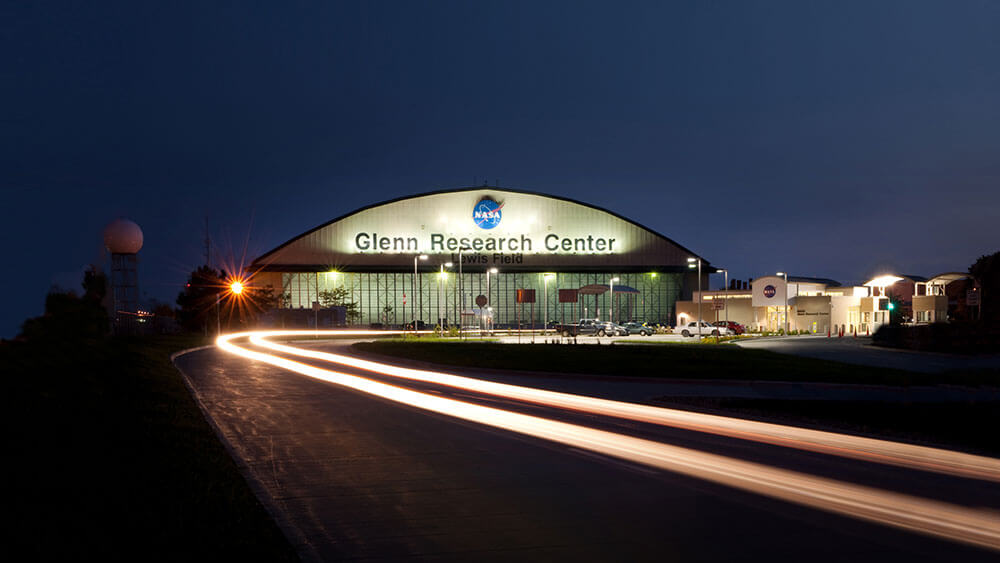
The NASA Glenn Research Center sits adjacent to Cleveland Hopkins International Airport on a 150-building campus that includes a hangar (above), an electric propulsion laboratory, and many other kinds of labs and test facilities, playing a large role in future missions to the moon and Mars. (Courtesy NASA)
PITTSBURGH
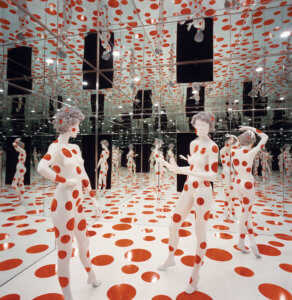
The Mattress Factory in Pittsburgh is a contemporary art museum.
After its birth as the “Steel City,” health care and education became the mainstays of Pittsburgh’s economy, followed by the rise of tech. Smokestacks have now been replaced by robots and self-driving cars. Last year, the city hosted RailsConf, said to be the world’s largest and longest-running gathering of Ruby on Rails (web-application framework) enthusiasts, practitioners, and companies, and AE Ventures’ Total Tech Summit.
When identifying what factors are pivotal for a traditionally industrial city to adapt to a changing economy, Harvard professor of economics Edward Glaeser told PBS’ FRONTLINE that “education has been statistically, historically the most powerful force. Educated cities have reinvented themselves, while other cities have not.” With 29 colleges and universities in the southwestern Pennsylvania region, Pittsburgh is a prime example of this successful reinvention due to its world-class educational institutions. Carnegie Mellon University currently ranks No. 1 in the country for its artificial intelligence program, and is also well known for its Robotics Institute and National Robotics Engineering Center.
Looking beyond tech, Pittsburgh began to draw groups related to the green industry (like the American Wind Energy Association, Land Trust Alliance, and the U.S. Green Building Council) when its David L. Lawrence Convention Center became the first to achieve LEED Gold certification in new construction and Platinum in an existing building.
“It changed the narrative from being a steel city to being a modern, clean city,” said Karl Pietrzak, vice president of convention Sales for VisitPITTSBURGH.
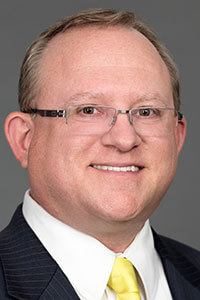
Karl Pietrzak
All the Accolades
A small sampling of the lists Pittsburgh made within the last two years.
- Best cities for jobs— WalletHub and Glassdoor
- Most digitally inclusive tech cities— The Brookings Institution
- No.2 city for software developers— Livecareer.com
- One of four tech hubs in the U.S. to watch in 2018 — VentureBeat
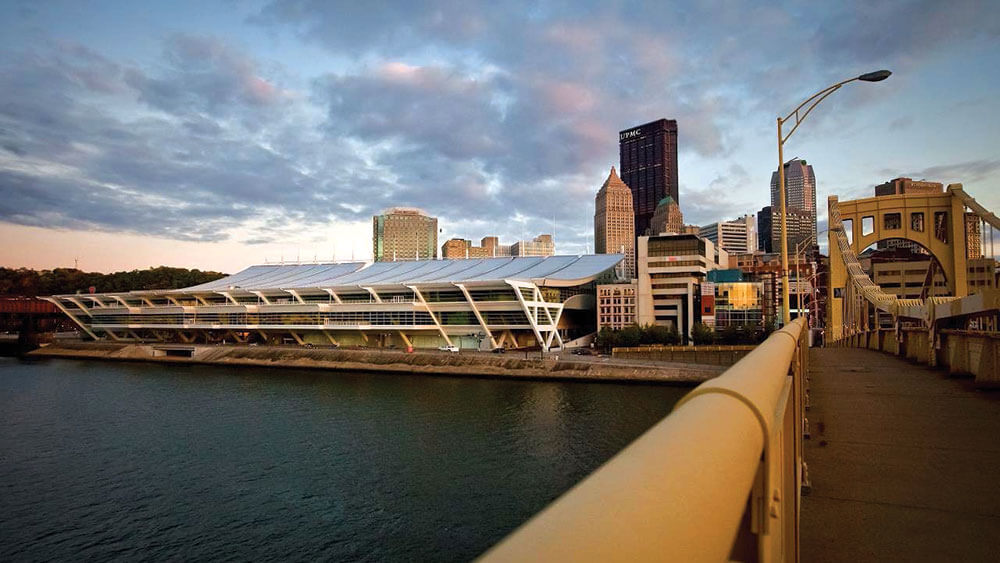
The LEED-certified David L. Lawrence Convention Center in Pittsburgh is state of the art. Over the next four years, it will host, among other events, AIGA Design Conference, Python Software Foundation’s PyCon, American Society of Mechanical Engineers’ Turbo Expo, and the Association for Computing Machinery’s International Conference on Software and Information Engineering.
MILWAUKEE
“Our mayor likes to say that his favorite bird is the crane,” said Laura Lutter Cole, convention sales manager at VISIT Milwaukee. At last count, Milwaukee has more than $5 billion in new construction projects in the works, much of them tied to attractions and hospitality. One of the largest
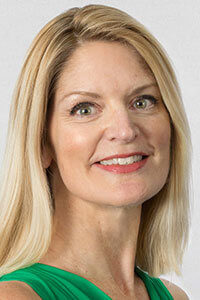
Laura Lutter Cole
projects opened last August, the $524-million Fiserv Forum, home of the NBA’s Milwaukee Bucks. The 714,000-square-foot arena features an outdoor plaza space for gatherings, concert capacity for about 18,000 spectators, along with 34 suites and three clubs — all just a few blocks from the Wisconsin Center convention complex.
Another undertaking, the Lakefront Gateway Project, is revamping the area between the lakefront and downtown to add more green space and improve connectivity and walkability. Several new hotel properties and hotel renovation projects have already debuted, including The Westin Milwaukee, and more are in the works for downtown. A new streetcar system, known as “The Hop,” is set to expand later this year. All of this shiny new development comes at a perfect time — in 2020, the city will host the Democratic National Convention.
Sitting directly on Lake Michigan, with access to both the Great Lakes and Mississippi River watersheds, Milwaukee’s identity is deeply intertwined with the bodies of water that surround it. Its location on the shores of the Great Lakes — the greatest single source of fresh water on the planet — has helped spur more than 200 water-technology businesses in the region, according to The Water Council, which is also based in the city. Milwaukee’s Walker’s Point neighborhood is home to the Milwaukee Water Technology District, and the UW-Milwaukee School of Freshwater Sciences (SFS), the first graduate school solely focused on the study of fresh water.

Milwaukee’s walls are local street artists’ canvas, adding color and vibrancy to avenues and boulevards. Four more destinations that paint the town. (Visit Milwaukee)
“There’s the East Coast, the West Coast, and Milwaukee is becoming known as America’s fresh coast,” Cole said. Take a stroll down to the shores of Lake Michigan and you’ll spot people surfing, sailing, and swimming. You’ll also see some of the city’s most eye-catching attractions, like the piercing, swooping wingspan of the Milwaukee Art Museum.
From good water comes great beer. “Milwaukee is the city that beer built,” according to VISIT Milwaukee. The number of microbreweries, taprooms, tours, and beer-related events in the city has ballooned in recent years. Here, groups can tour the Miller Caves where Frederick Miller chilled his beer, raise a toast in a German-style bierhaus, or zip around between breweries on a guided bus tour. At Discovery World, the city’s lakefront science and technology center, groups can learn how to brew and bottle their own beer.
The Pabst Brewing Company, established in 1844 in Milwaukee and at one point the country’s largest brewery, is now Best Place at the Historic Pabst Brewery, offering tours and event spaces. “We were part of the Rust Belt — that’s our working-class heritage,” Cole said. “When you look at these buildings built in the late 1800s, you can see that now, over 100 years later, we’re celebrating it again, but with a new Milwaukee.”
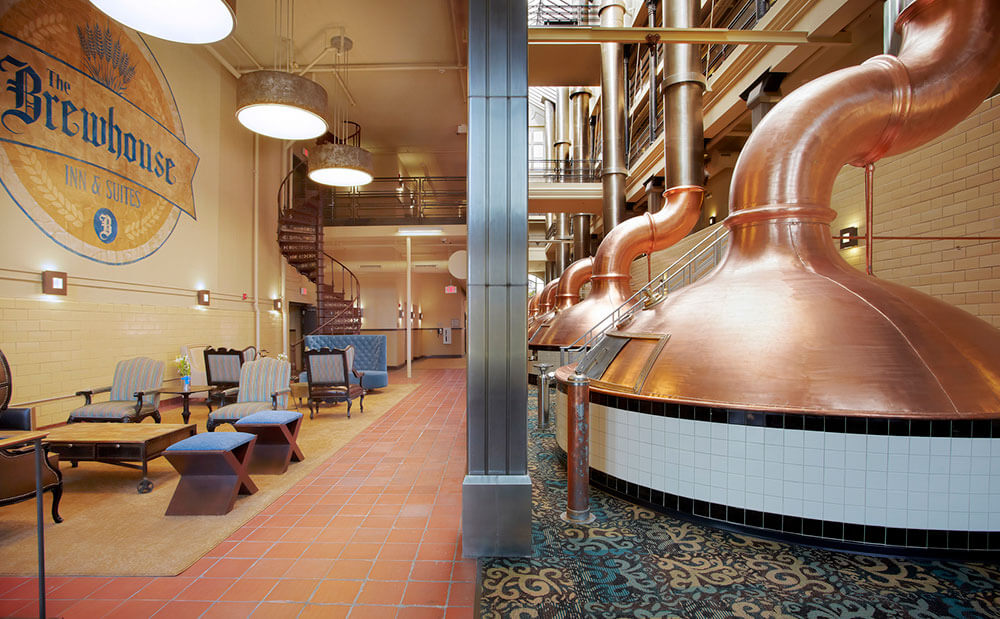
The Brewhouse Inn & Suites is one of a handful of historic Pabst Brewing Company buildings in Milwaukee now used in new ventures. (Visit Milwaukee)
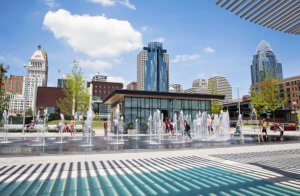
BLINK, one of the largest light, art, and projection-mapping events in the U.S., will light up Cincinnati for four days again this October. A living gallery of large-scale installations, murals, and interactive art, the free event spans 20 city blocks, from The Banks (above) to Findlay Market in the Over-the-Rhine neighborhood.
CINCINNATI
Like many other former Rust Belt cities, Cincinnati sits on a river. The Great American Ballpark, home of the Cincinnati Reds, has a front-row seat to the Ohio River along with Paul Brown Stadium and the Ohio River Trail. The Duke Energy Convention Center is just a 15-minute stroll away, where the surrounding Central Business District offers highlights like Fountain Square, Skyline Chili, and Proctor & Gamble (P&G) headquarters within convenient reach.
P&G is one of nine Fortune 500 companies in Cincinnati, along with retailers Kroger and Macy’s. The city’s economic strengths range from manufacturing to financial services to health care.
“That kind of corporate headquarters, that presence in Cincinnati, not only helps the business travel that comes into the city, it also creates this need for innovation,” said Andy Conklin, CTA, executive vice president of sales and marketing at Cincinnati USA Convention & Visitors Bureau.
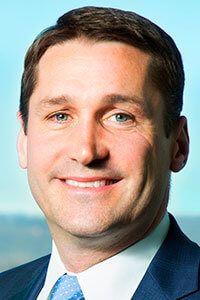
Andy Conklin
In a February 2019 article in Inc. magazine, Jeff Barrett writes that, “in Cincinnati, a very intentional collaboration between big companies and startups has been taking place for a decade.” He explains that these David-Goliath pairings have helped to transform Cincinnati into one of the country’s best cities for startups. It has also helped to transform Over-the-Rhine, a historic district that was stricken with poverty and crime only 10 years ago. After the Cincinnati Center City Development Corp. (3CDC) began redeveloping the neighborhood, startups began moving in. Today, it’s home to Cintrifuse, a public-private firm helping to build the city’s startup community, as well as numerous breweries, a heritage from German immigrants who settled here in the 1800s.
About two miles north, another hub of innovation is springing up. The Uptown Innovation Corridor is a mixed-use development designed to build off of nearby University of Cincinnati and the city’s medical, research, and innovation clusters. The new University of Cincinnati 1819 Innovation Hub is part of that mix along with the $68-million University of Cincinnati Gardner Neuroscience Institute headquarters, which opened in April 2019. Plans also call for a new campus for the National Institute for Occupational Safety and Health (NIOSH) to open by 2021 along with a sizeable amount of residential, office, hotel, and retail space.
It’s these pockets of innovation, supported by evolving infrastructure and investment from major local companies that is working so well for Cincinnati. Earlier this year, Forbes ranked it No. 6 on its list of “Top 10 Rising Cities For Startups.” “When you’re here, the city isn’t too big, so connections happen,” Conklin said. “That creates more opportunities. That’s what I think is so successful about Cincinnati.”
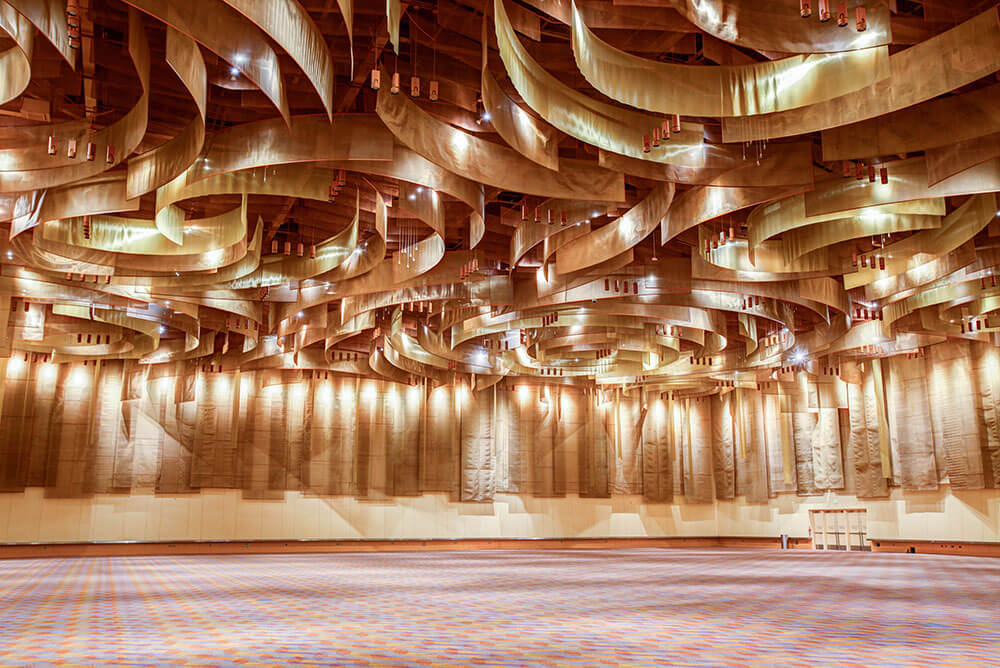
Swirling copper and bronze fabric panels blur the lines between the ceiling and walls at the Duke Energy Convention Center’s 40,000-square-foot grand ballroom.
Jennifer N. Dienst is a writer in Charleston, S.C.
